It's safe to say that the James Webb Space Telescope hasn't disappointed.
The hype surrounding the largest telescope we've ever launched into space was big, and decades-long, but as the latest James Webb Space Telescope images show, its view of the Universe is groundbreaking.

But clearly there's more to JWST than just beautiful images. What sort of data will astronomers receive as the Webb Telescope continues its journey peering deep into our Universe?
What questions will the James Webb Space Telescope answer along the way? What cosmic mysteries will it solve?
Astronomers, astrophysicists, planetary scientists and exoplanet hunters already have multiple questions they're hoping JWST will be able to answer, and as the months and years go by, many more mysteries will surely raise their head.
Here are 4 questions astronomers are hoping JWST will be able to address over the coming decades.
4 questions for James Webb Space Telescope to answer
What do the first stars look like?
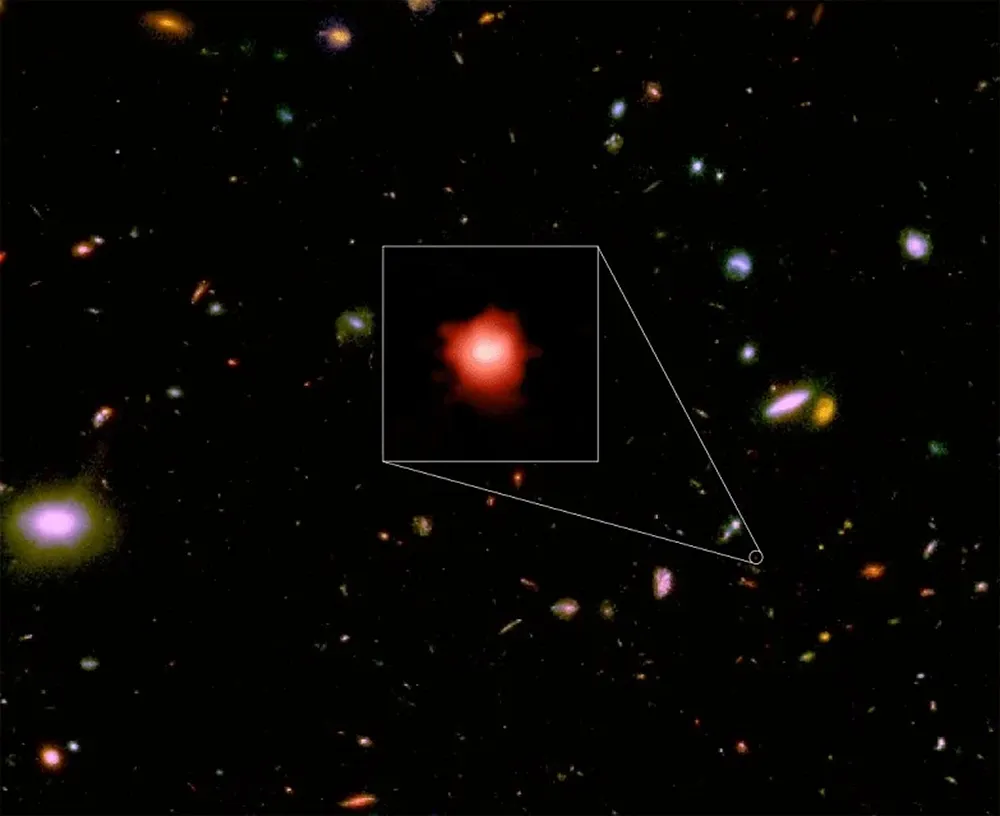
Astronomers are always looking back into the past. That’s because it takes time for light to travel across the Universe.
We don’t see things as they are when the light arrives here, but as they were when the light first departed. For distant galaxies, the delay is millions and even billions of years.
When we look at the night sky, we are essentially looking back in time.
So very distant galaxies were also some of the first galaxies to form in the Universe.
The Hubble Space Telescope revolutionised this area of research, finding thousands of distant galaxies in a patch of sky so tiny that it could be covered by a grain of sand held at arm’s length.
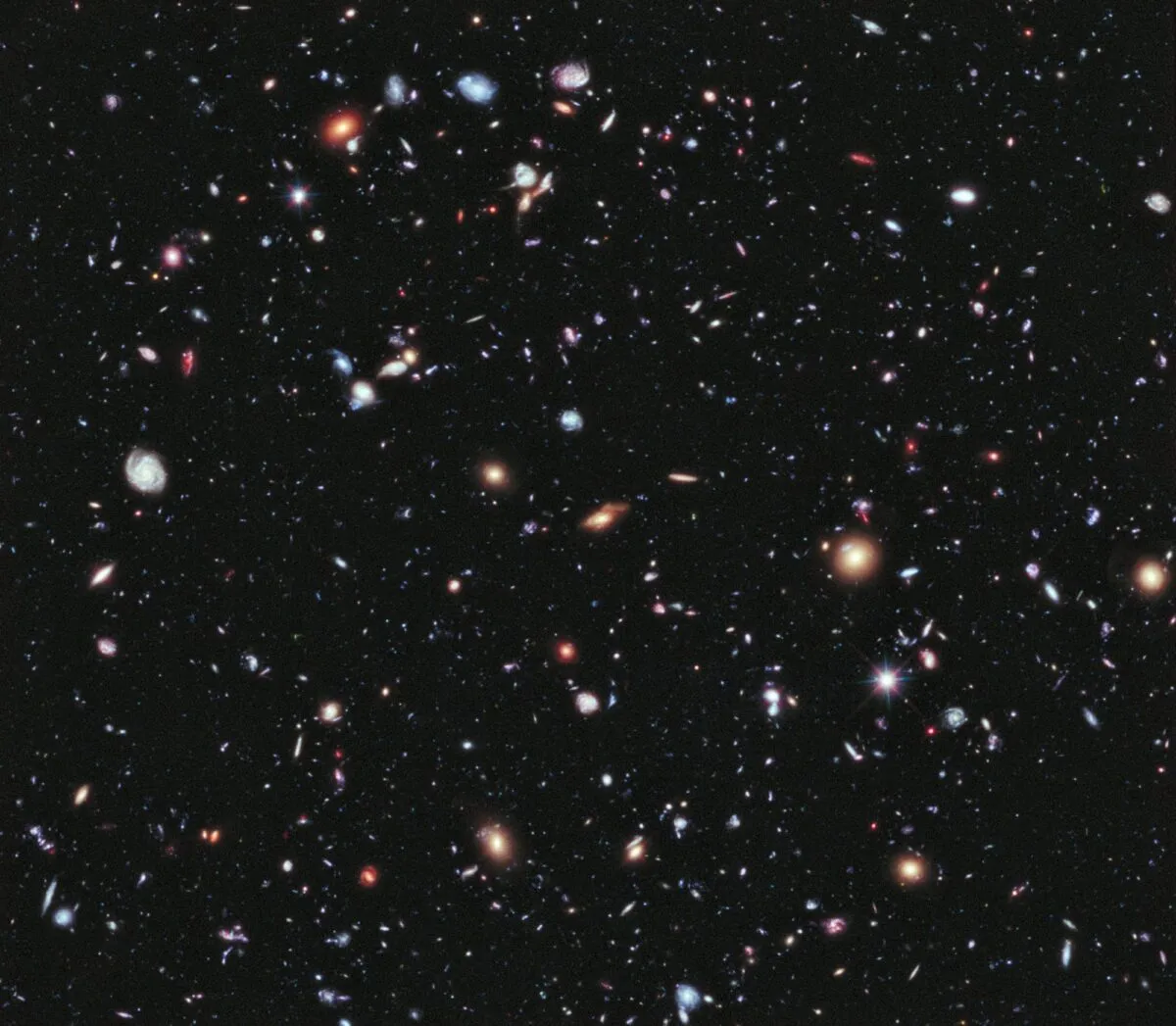
The light from the most distant galaxy observed before JWST – HD1 – took a staggering 13.1 billion years to reach Earth.
Astronomers are peering back to a time just 700 million years after the Big Bang.
Yet they want to look back even further to when the very first stars and galaxies appeared, estimated to be 100–200 million years after the Big Bang.
They’re hunting the first light that lit up the so-called cosmic dark ages.
Hubble just isn’t up to that task. You need an entirely different kind of telescope.
Enter JWST, which gathers infrared light instead of the visible light to which our eyes, and Hubble, are sensitive.
Infrared light is able to penetrate the dust that can sometimes block our view of distant galaxies.
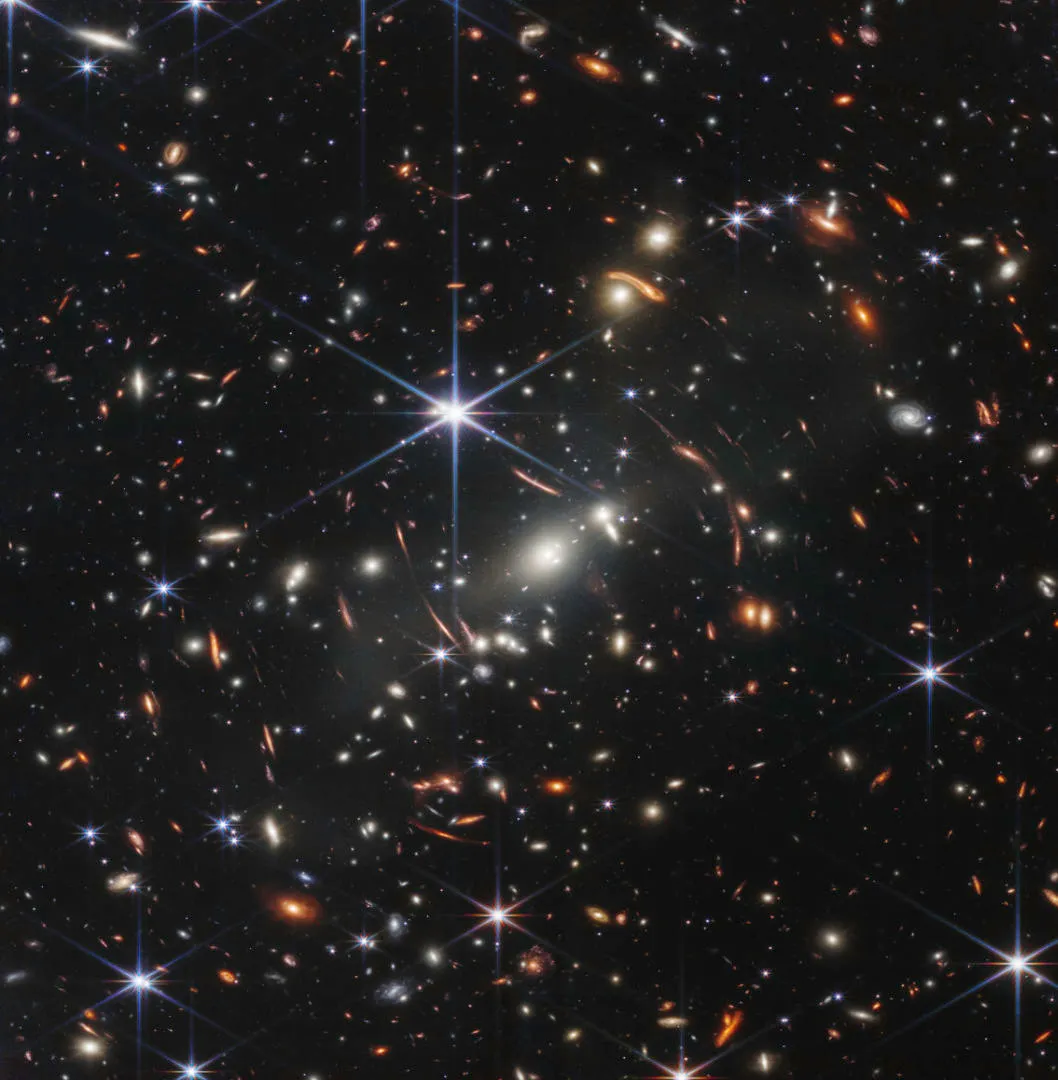
For the very first galaxies, there’s an even more fundamental problem with observing in visible light.
The Universe has been expanding ever since its birth in the Big Bang. Any light travelling through the expanding Universe also gets stretched - or red shifted - along the way.
The light from the earliest stars and galaxies has been stretched so much that it’s now slipped out of the visible spectrum and into the infrared.
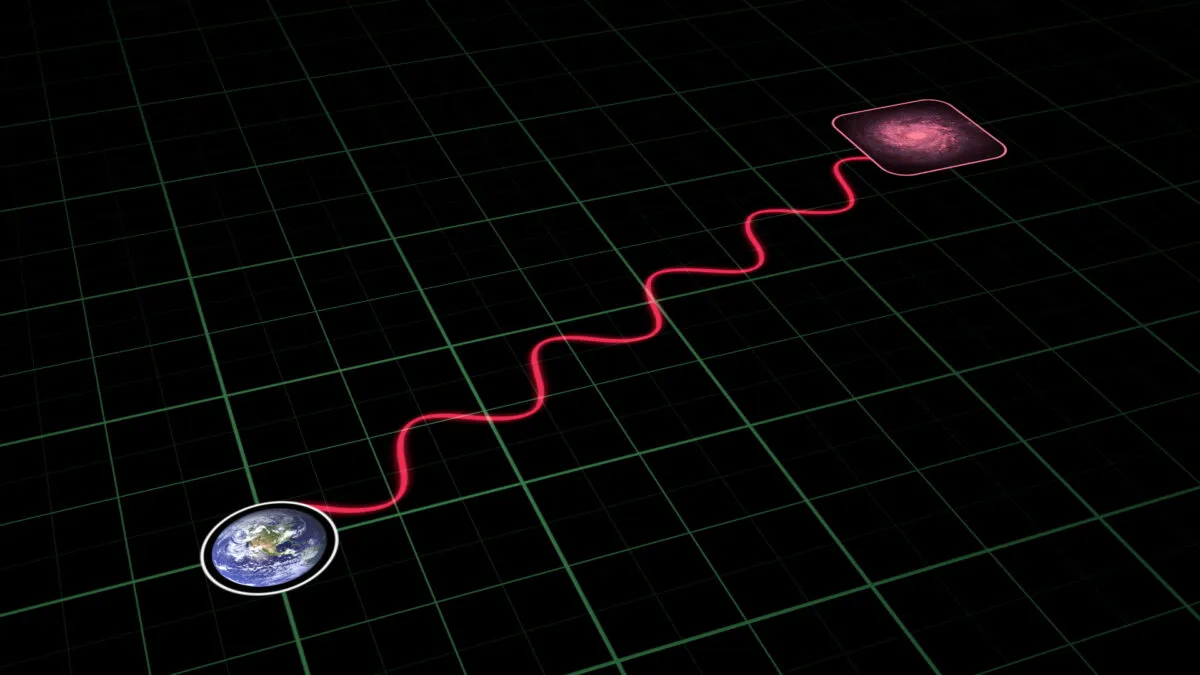
Now, for the first time, we’ll be able to see it.
"It’s a chance for scientists to find out what typical galaxies were like in the very early Universe and maybe even find evidence of the very first stars ever formed," says Dr Emma Curtis-Lake, STFC Webb Fellow at the University of Hertfordshire.
How do galaxies form?

We live in the Milky Way galaxy – a vast stellar metropolis containing up to 400 billion stars.
In turn there are up to two trillion other galaxies in the Universe. But how are these vast structures made?
Most astronomers tend to favour a so-called ‘bottom-up’ approach in which a galaxy forms from a series of mergers involving smaller groups of stars.
Yet it is far from clear exactly how this process plays out. Thankfully, JWST can help.
One of the early images from JWST depicts Stephan’s Quintet, a collection of five galaxies, four of which are interacting with one another.

It shows us that a gravitational dance is underway as dust, gas and stars pirouette, pulled around by each other’s gravity.
One of the galaxies – NGC 7318B – is producing huge shockwaves as it careers through the cluster.
While the four interacting galaxies are relatively close to us at just under 300 million lightyears, studying them will help astronomers understand what they’re looking at when they turn JWST towards more distant galaxies.
One instrument aboard JWST is particularly well suited to this endeavour: the Near-Infrared Spectrograph (NIRSpec).
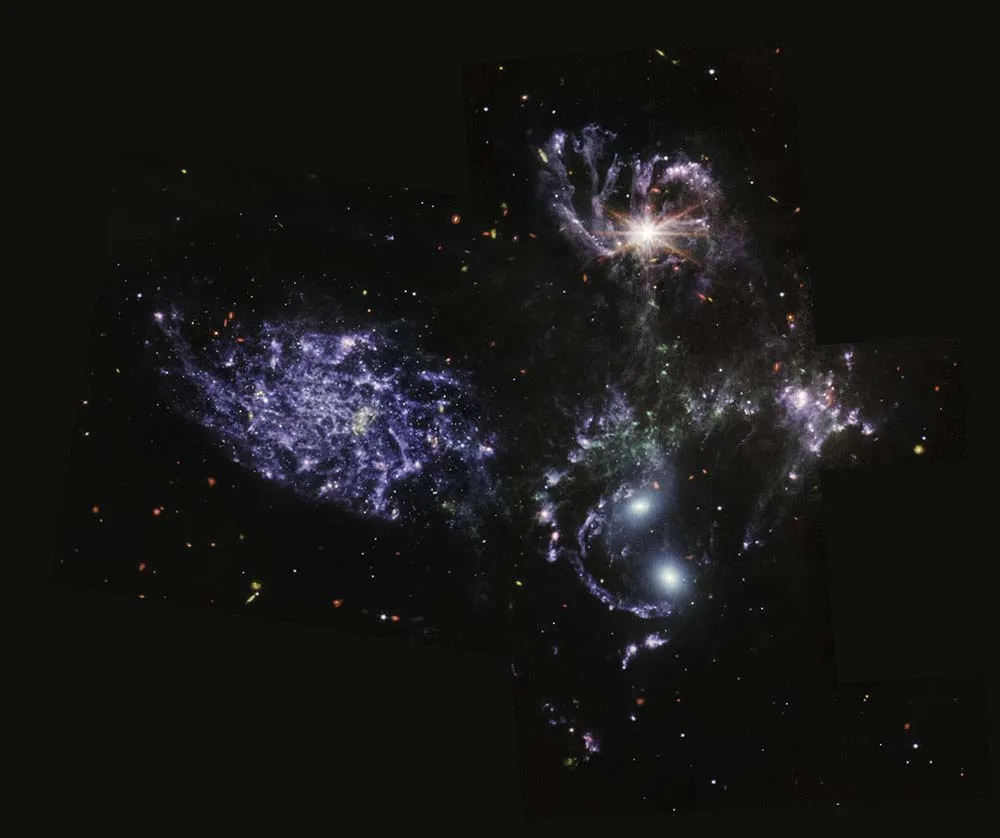
Astronomers have already pointed it towards the supermassive black hole in the centre of one of four interacting galaxies in Stephan’s Quintet – NGC 7319.
Black holes are thought to play a significant role in galactic evolution.
The one in NGC 7319 has a mass equal to 24 million Suns, a number so big that it could only have formed by the mergers of lots of smaller black holes.
The instrument has also been deployed further afield.
"My favourite moment [from the first JWST data] was when they revealed the image showing the NIRSpec spectrum of a galaxy over 13 billion lightyears away," says Curtis-Lake.
"I’ve been impatient to find out how NIRSpec performs, and I can’t wait to get my hands on it and test our models for my own research," she says.
NIRSpec can simultaneously observe hundreds of galaxies at once, looking for evidence that mergers are taking place.
How are stars and planets born?
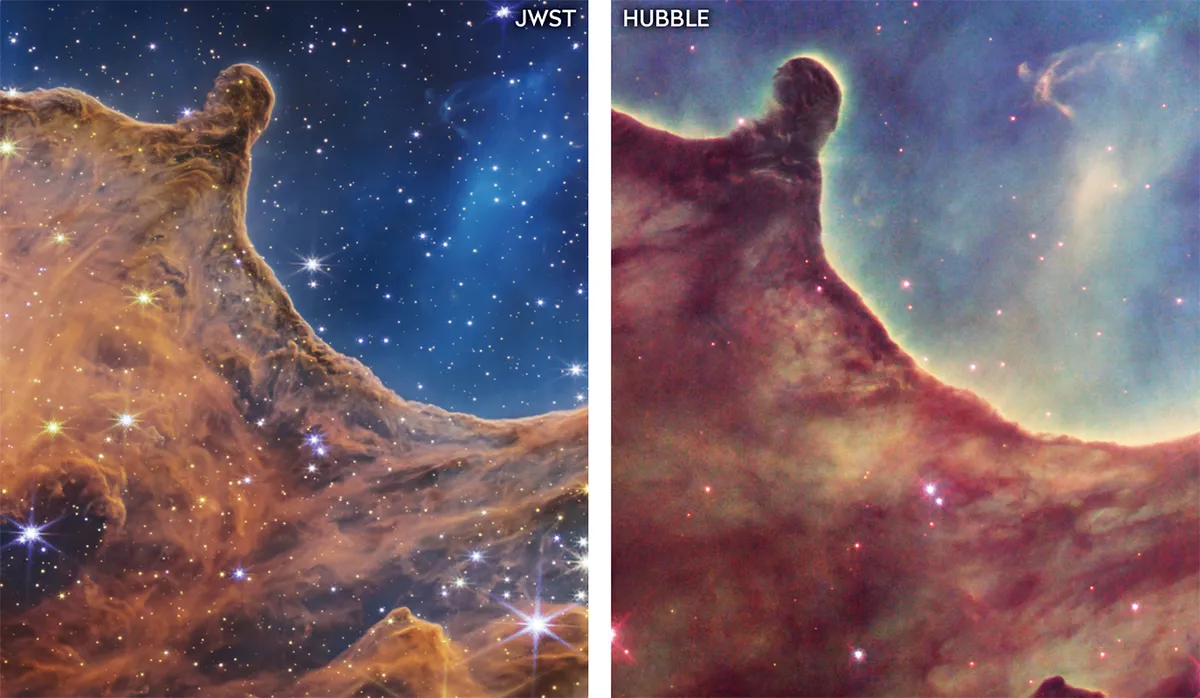
The modern world offers people many ways to look back on what we were like as children. It isn’t so easy with stars.
Our Sun is in its middle age at 4.6 billion years old, but astronomers have found some stars that are just one million years old – that’s the equivalent of being a 3.5-day-old baby in human terms.
Among the first images to be returned by JWST is a stunning look at the Carina Nebula, a cloud of gas and dust where hot young stars are bursting into life.
These stellar infants are enshrouded by dust, which obscures the view that visible light telescopes such as Hubble can see, but which JWST pierces straight through.
The infrared reveals hidden stars, allowing astronomers to see how their radiation carves through the surrounding gas.
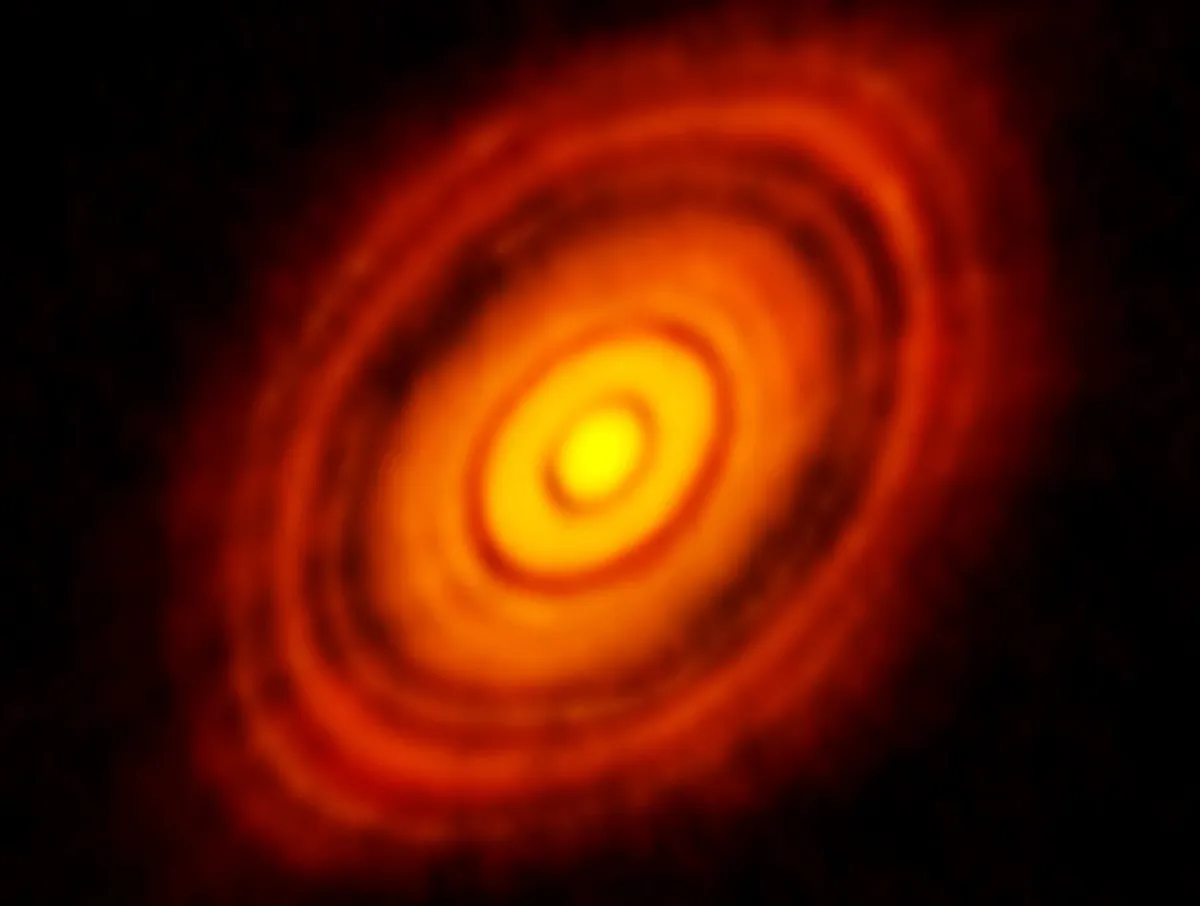
The telescope will also be able to look at the planet-forming regions around stars. The outer parts of these protoplanetary discs have been studied before using radio telescopes such as the Atacama Large Millimeter Array (ALMA) in Chile (see image above).
However, JWST’s greater resolution will mean it can peer into the inner part of the disc where rocky Earth-like exoplanets may be forming.
JWST will measure the different types of molecules present in the inner disc such as water, carbon dioxide and methane – all associated with life in some way.
If, for example, water is already present in and around newborn rocky planets then that has promising implications for our chances of finding water worlds elsewhere in the Universe.
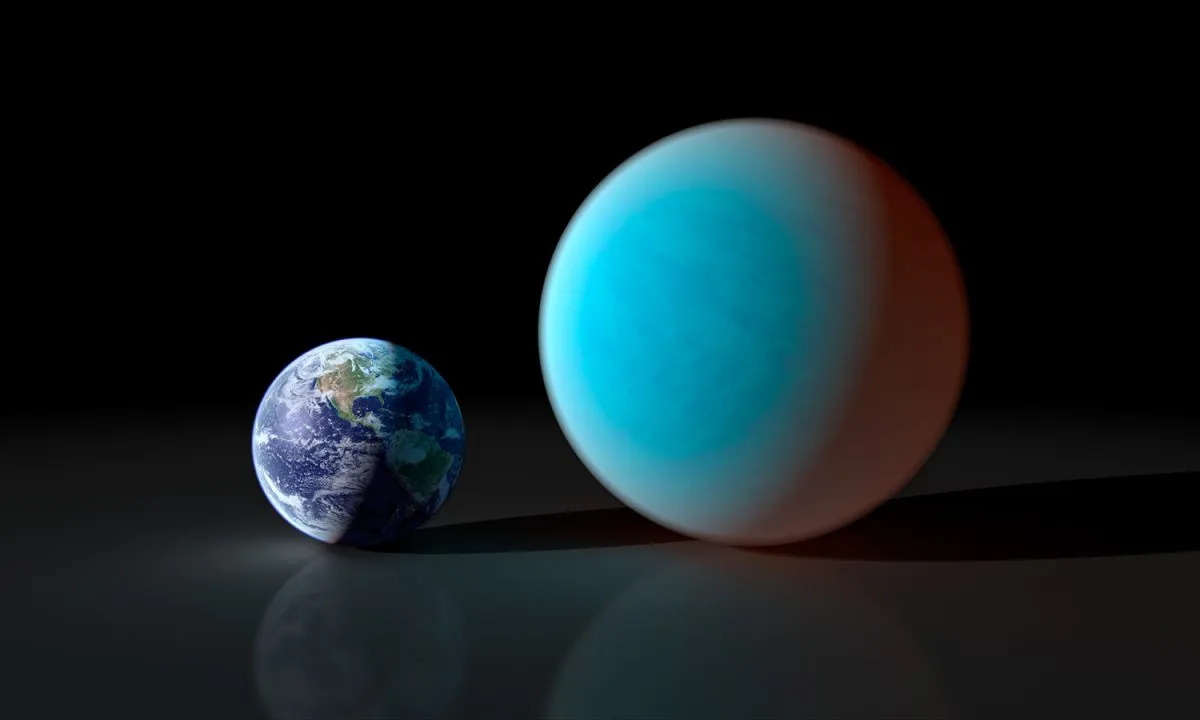
Astronomers have already been surprised by the variety of distant planets they’ve found to date. Many stars are orbited by so-called super-Earths and mini-Neptunes – worlds partway in size between the Solar System’s rocky and gas planets.
They seem to be the most common type of planet in the Universe and yet there is none in our own Solar System.
JWST could help us learn what these planets look like and how they come about.
Many of these observations can only be made in the infrared, which is absorbed by Earth’s atmosphere.
It’s why these measurements require a space-based telescope.
JWST is also positioned 1.5 million kilometres away from Earth to avoid contamination from the infrared energy emitted by Earth itself, giving it the clear view it needs to pick up such miniscule detail from lightyears away.
Is there another Earth out there?
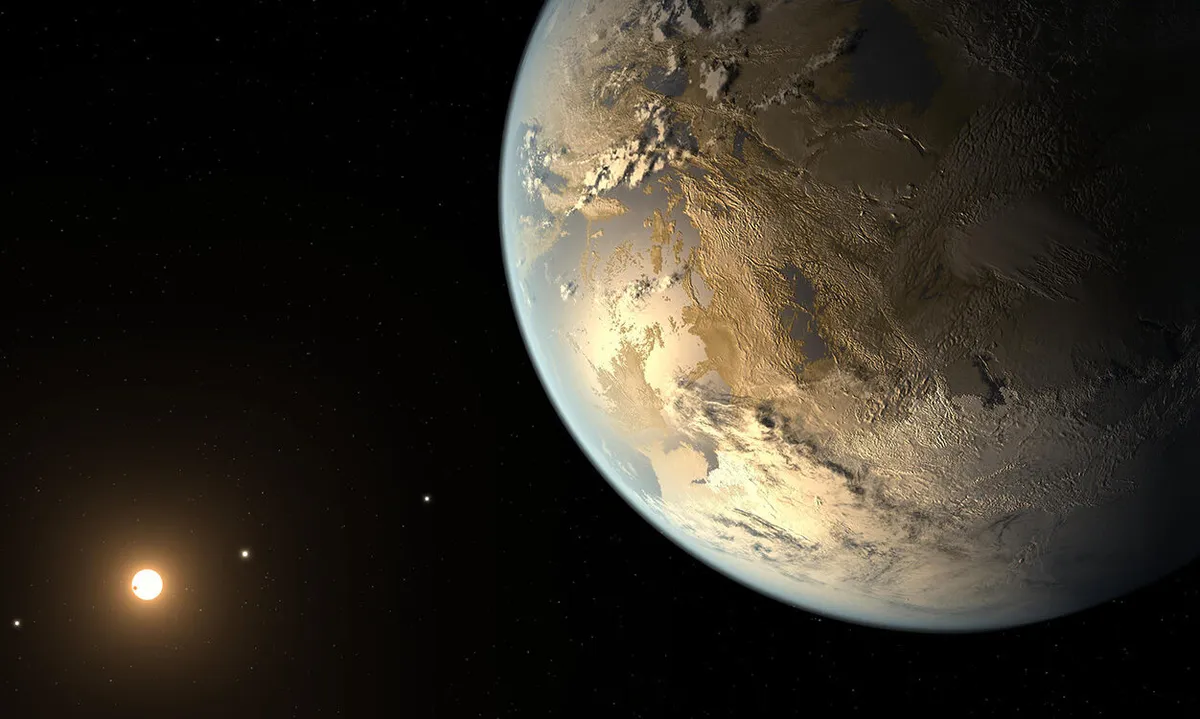
Perhaps the biggest question it’s possible to ask about the Universe is: ‘Are we alone?’.
JWST should allow us to make a giant leap forward in finding the answer.
So far we’ve confirmed over 5,000 exoplanets – planets in other solar systems.
The bulk have been found using a technique called the transit method.
Although distant planets are too small and dim to be seen directly, we do see a temporary drop in the brightness of their host stars when a planet passes in front of them (an event called a transit).
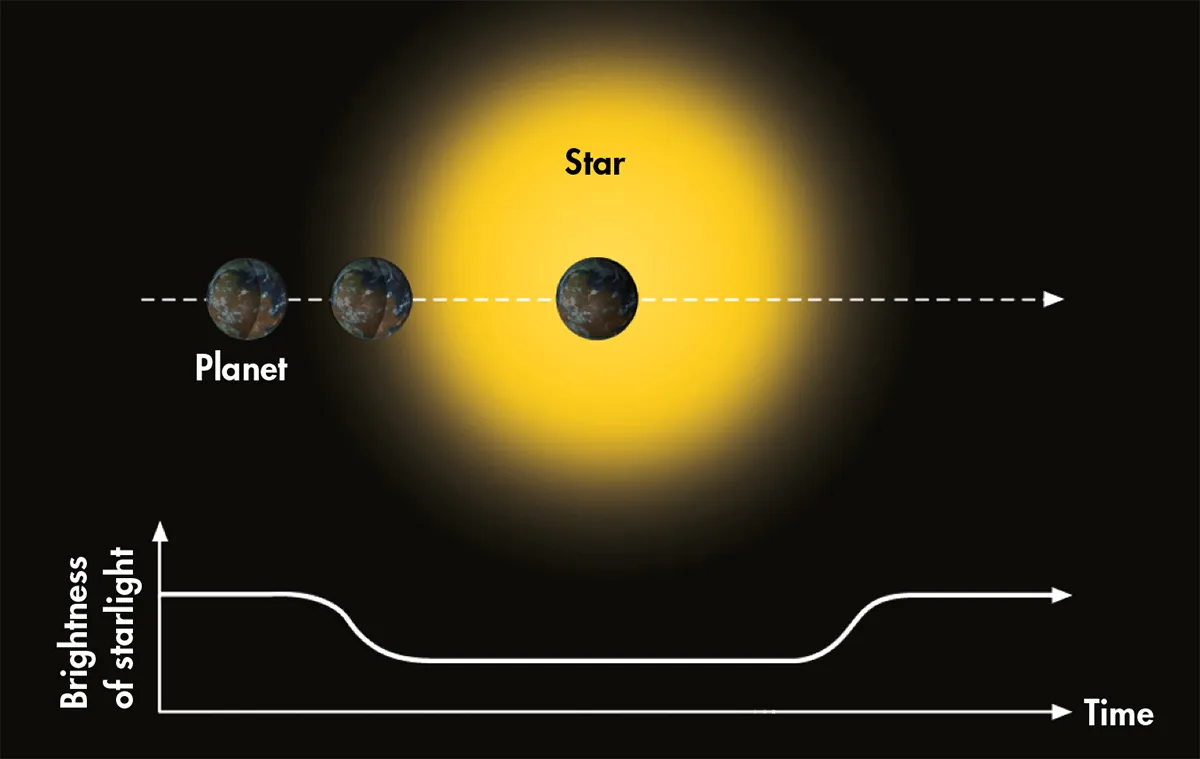
It’s a change in brightness of less than 1%, but it holds a wealth of information.
As the planet passes between us and the star, some of the star’s light filters through the planet’s atmosphere before continuing on towards Earth.
Different chemical elements and molecules swallow some of the starlight, leaving distinctive gaps in the light JWST gathers up.
There are some elements and molecules that swallow infrared light, so the gaps that result can’t be seen by telescopes that only pick up visible light.
Water and methane – which is produced by microbes on Earth – are two key examples.
Astronomers want to know how common they are among exoplanets and how abundant they are on individual exoplanets.
After all, the majority of Earth’s surface is covered in water.
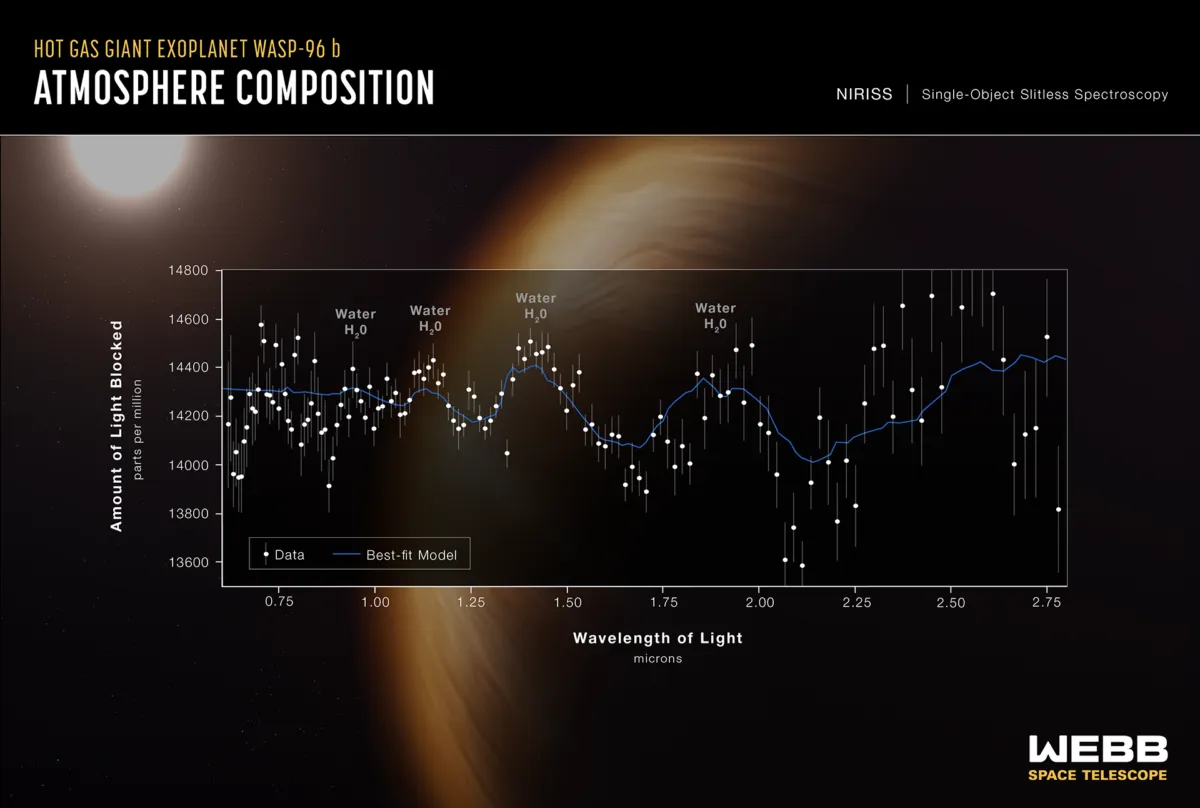
The first data release from JWST contained the transit of an exoplanet called WASP-96b, showing clear signs of water blocking the light from the star.
Though this specific planet was known to have water already, JWST peered into the atmosphere of this alien world in more detail than ever before.
Despite not having been designed to examine exoplanets, it’s extremely suited to the task.
Previous exoplanetary telescopes had big gaps in their data, as their orbits dip in and out of Earth’s shadow.
JWST, 1.5 million kilometres from home, has no such problem.
The sheer size of its primary mirror means it can measure the atmospheres of smaller planets than previously possible, including potentially habitable worlds in the TRAPPIST-1 planetary system.
Here, as in all of JWST’s science aims – to see the first stars, how worlds are formed, how galaxies evolve – the most exciting observations are yet to come.
This article originally appeared in the September 2022 issue of BBC Sky at Night Magazine.
